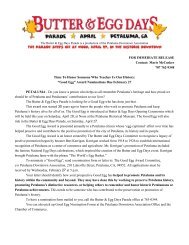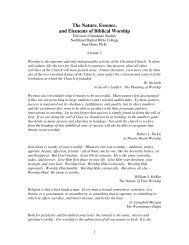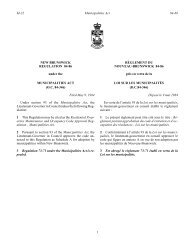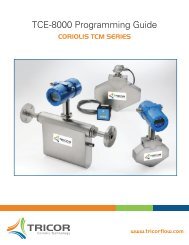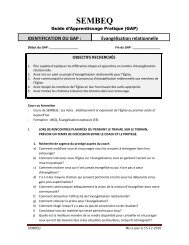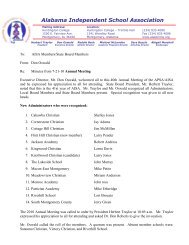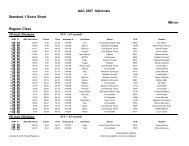The EMIS Audit
The EMIS Audit
The EMIS Audit
You also want an ePaper? Increase the reach of your titles
YUMPU automatically turns print PDFs into web optimized ePapers that Google loves.
3. Use of data and analysis is used in procurement of utilities – Is there evidence<br />
of analysis of energy commodity procurement and management from the filter of<br />
ensuring that the conditions are in place to address: i) operational requirements<br />
and maximum flexibility of the facility; ii) negotiation of optimal contracts; iii)<br />
daily scheduling and interruptible options are taken advantage of and iv) bills<br />
are analyzed for errors and detailed consumption data i s kept.<br />
4. Maintenance budgets include repairs to energy systems - Does the maintenance<br />
budget include specific line items of expenditure for repairs and improvements<br />
to energy s ystems<br />
4.2.2 Organizational Structure<br />
<strong>The</strong> dimension of organizational structure contains five criteria:<br />
1. Explicit energy management program – i.e. Is there an explicit energy<br />
management program or guiding vision for energy management activities at the<br />
site?<br />
2. Objectives set for utility performance improvement - Have objectives been set<br />
for utility performance improvement? <strong>The</strong>se may also be termed strategic<br />
targets for the organization.<br />
3. Explicit management commitment – i.e. Is the site senior management<br />
committed to improve energy performance, and if so what form does this<br />
commitment take?<br />
4. Energy teams established and key stakeholders included - is there an energy<br />
management team or some other organizational grouping tasked with oversight<br />
of the energy management program and if so what is its makeup.<br />
5. Accountability for energy performance devolved to production / operations – i.e.<br />
are line managers, operations team and operators held accountable to their<br />
managers for energy performance. If the production and operations =staff are<br />
held accountable for performance are they also empowered to instigate changes<br />
to improve performance?<br />
4.2.3 Management Procedures<br />
<strong>The</strong> dimension of Management Procedures contains seven criteria:<br />
1. Regular reviews of energy performance – i.e. is the review of energy<br />
performance aligned with the reporting frequenc y of the data analysi s s ystems?<br />
2. Actions assigned and followed up – As part of the review process are actions<br />
assigned to individuals and then followed up in subsequent reviews.<br />
3. Staff incentives – Are the staff motivated to improve the energy performance of<br />
the equipment under their control, and what form do the incentives or motivation<br />
take.<br />
4. Sufficient resources allocated - Have sufficient resources been allocated to<br />
operate a management s ystem in terms of management time etc?<br />
5. Regular reviews - How frequently is the operation o f the management s ystem<br />
reviewed to ensure that it continues to be fit for purpose?<br />
6. Operational / Maintenance schedules - Do operation or maintenance schedules<br />
exist to reduce energy performance - e.g. start up/shut down lists, preventative<br />
maintenance linked to energy consumption.<br />
7. Active reporting s ystems - Is there a reporting s ystem for utility waste issues -<br />
E.g. steam leaks, compressed air leaks etc. - that facilitate their identification<br />
and rectification? For example, are triggers sent to initiate a corrective work<br />
order?<br />
<strong>EMIS</strong> Ma nu al Page | 29<br />
Part A




